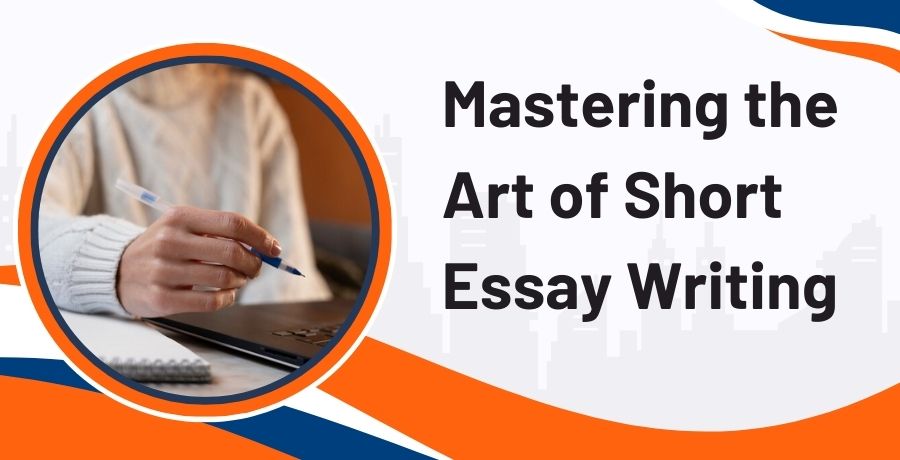Mastering the Art of Writing a Short Essay

Short essays are a common form of academic writing that requires precision, clarity, and conciseness. Whether you’re a student crafting an assignment or a writer honing your skills, understanding how to write a compelling short essay is essential. Ace Write provides expert guidance, we’ll explore the step-by-step process of crafting an effective short essay that captivates readers and conveys your message with impact.
Understanding Short Essay Writing
Before diving into the writing process, it’s essential to understand what constitutes a short essay. Short essays are concise pieces of writing that focus on a specific topic or argument. They typically range from 250 to 1000 words, requiring writers to convey their ideas succinctly and efficiently. Despite their brevity, short essays still adhere to the fundamental principles of academic writing, including precision, clarity, and coherence. Writers must carefully select and organize their ideas to ensure that every word contributes meaningfully to the overall message of the essay.
How to Write a Brief Essay
Writing a brief essay requires a focused approach that emphasizes clarity, conciseness, and precision. Start by selecting a narrow topic that can be adequately explored within the given word count. Avoid overly broad subjects that may require extensive coverage. Next, create a detailed outline to organize your ideas and ensure a logical flow of information. Each paragraph should contribute to the central theme of the essay, with clear transitions between ideas. During the writing process, prioritize essential points and omit unnecessary details. Finally, revise and edit your essay carefully to eliminate any redundancies and tighten your prose. By adhering to these steps, you can effectively craft a brief essay that communicates your ideas succinctly and persuasively.
Crafting an Impactful Short Essay
Crafting an impactful short essay requires careful attention to both content and structure. Begin by selecting a compelling topic that resonates with your audience and aligns with your objectives. Develop a clear thesis statement that encapsulates the central argument or message of your essay. Structure your essay with a concise introduction, well-developed body paragraphs, and a strong conclusion. Use evidence, examples, and persuasive language to support your argument and engage the reader. Finally, revise and edit your essay thoroughly to ensure clarity, coherence, and impact. By following these steps, you can craft an impactful short essay that effectively communicates your ideas and leaves a lasting impression on your audience.
Key Steps
Choosing a Topic
Selecting a topic is the first crucial step in writing a short essay. It’s essential to choose a topic that interests you and aligns with the assignment requirements. Brainstorming is a useful technique for generating topic ideas. Consider your personal experiences, academic interests, or current events that inspire you. Once you have a list of potential topics, narrow it down to one that is manageable within the given word count and allows for in-depth exploration.
Planning and Outlining
After selecting a topic, take time to plan and outline your essay. An outline serves as a roadmap for your writing, helping you organize your ideas and ensure a logical flow of information. Start by identifying the main points or arguments you want to address in your essay. Then, arrange them in a logical order and consider how each point will transition to the next. Be flexible with your outline and be willing to make adjustments as you write and refine your ideas.
Crafting a Strong Thesis Statement
The thesis statement is the central idea or argument of your essay, and it sets the direction for the entire piece. A strong thesis statement is specific, debatable, and relevant to your topic. It should clearly articulate the main point you are making and provide a roadmap for the reader. Take time to craft a thesis statement that is concise yet comprehensive, as it will guide your writing and help you stay focused on your main argument.
Writing the Introduction
The introduction is your opportunity to grab the reader’s attention and provide context for your topic. Start with a hook—a compelling anecdote, statistic, or question—that draws the reader in and makes them want to continue reading. Then, provide some background information on your topic to orient the reader and explain why it is important or relevant. Finally, end your introduction with a clear and concise thesis statement that previews the main points of your essay.
Developing Body Paragraphs
The body paragraphs of your essay should expand upon the main points or arguments outlined in your thesis statement. Each paragraph should focus on a single idea or aspect of your topic and provide evidence, examples, or analysis to support it. Start each paragraph with a topic sentence that introduces the main point, and then use supporting details or evidence to develop and expand upon that point. Use transitions to ensure a smooth flow between paragraphs and maintain coherence throughout your essay.
Concluding with Impact
The conclusion brings your essay to a close and reinforces the main points or arguments you’ve made. Avoid introducing new information in the conclusion; instead, focus on summarizing the key points of your essay and reiterating the significance of your argument. End with a thought-provoking insight or reflection that leaves a lasting impression on the reader and reinforces the central message of your essay.
Summary
Mastering the art of short essay writing requires practice, dedication, and attention to detail. By following the steps outlined in this guide and leveraging the expertise of Ace Write, you can elevate your writing skills and produce impactful short essays that leave a lasting impression on your readers. Whether you’re crafting a persuasive argument, analyzing a complex topic, or conveying personal reflections, Ace Write is here to support you on your writing journey. With our guidance, you can confidently tackle any short essay assignment and effectively communicate your ideas with clarity and precision.
